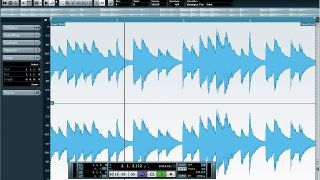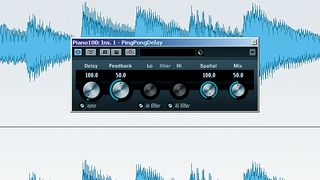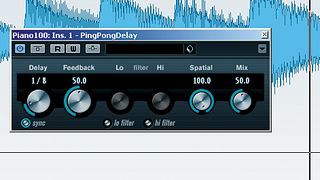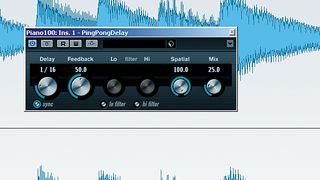How to create stereo width using ping-pong delay
Add width with a stereo delay effect
Careful use of a stereo delay effect is an invaluable tool for thickening up sounds and adding width to a mix.
In the video above and the step-by-step below we use a mono piano line to demonstrate how.

Step 1: We've chosen a piano to demonstrate this technique as it spans a relatively broad frequency range, has a reasonably audible sustain and features very defined attack transients. Load Piano100.wav (right click and Save As) into your DAW and have a listen. This is a stereo file with mono information in it (ie, both channels are identical).

Step 2: We're running at 100bpm. Insert a basic stereo delay effect, make sure the panning/spread is set to max and deactivate any filtering. Using Cubase's Delay, we've left the Feedback and Mix knobs at their default middle positions. A Delay of 100ms improves the stereo width, but it sounds messy.

Step 3: Tempo-synced delay would seem the obvious choice, as it'll ensure rhythmic, musical repeats. But what delay interval we go for? Our goal is to enhance the piano part's perceived width - an 1/8 Delay setting sounds clashy, with some of the original notes being masked by previous notes...

Step 4: ...but 1/16 Delay sounds much better, as it leaves space for the original mono signal to breathe (the delay settings you use will vary depending on the source signal). As well as giving the impression of the piano taking up more of the stereo field, the delay adds front-to-back depth. Finally, we set the Mix knob to 25 to put the focus back on the dry signal.
Get the MusicRadar Newsletter
Want all the hottest music and gear news, reviews, deals, features and more, direct to your inbox? Sign up here.
Computer Music magazine is the world’s best selling publication dedicated solely to making great music with your Mac or PC computer. Each issue it brings its lucky readers the best in cutting-edge tutorials, need-to-know, expert software reviews and even all the tools you actually need to make great music today, courtesy of our legendary CM Plugin Suite.

"A classic compressor for free on Valentine's Day – it must be love!": Universal Audio is giving away an 1176 plugin as a Valentine's gift - here's how to get it and use it

“It's like recording sounds across time”: How Yumi Matsutoya, one of Japan's biggest ever artists, used AI to turn back the clock when crafting her new album
Most Popular





